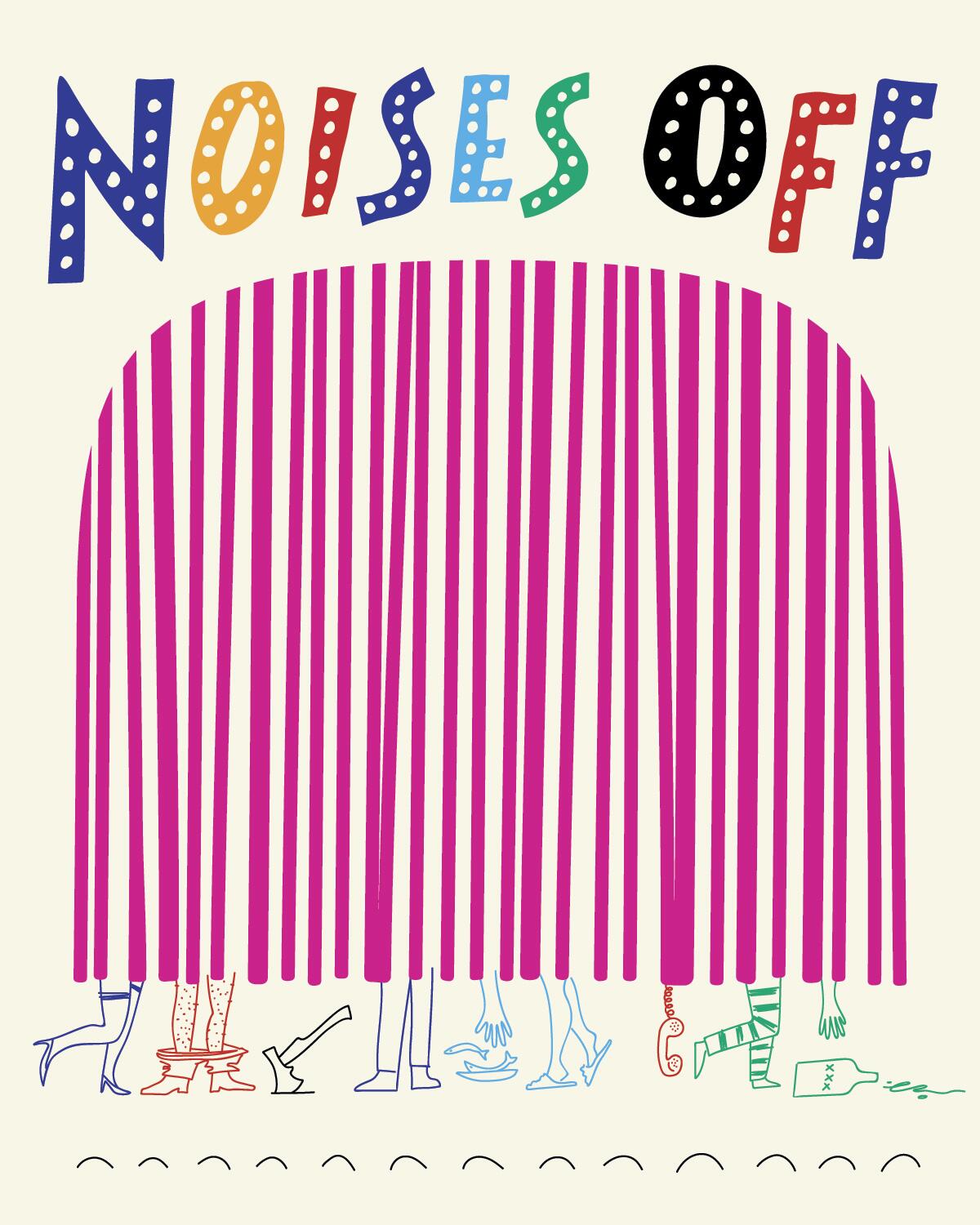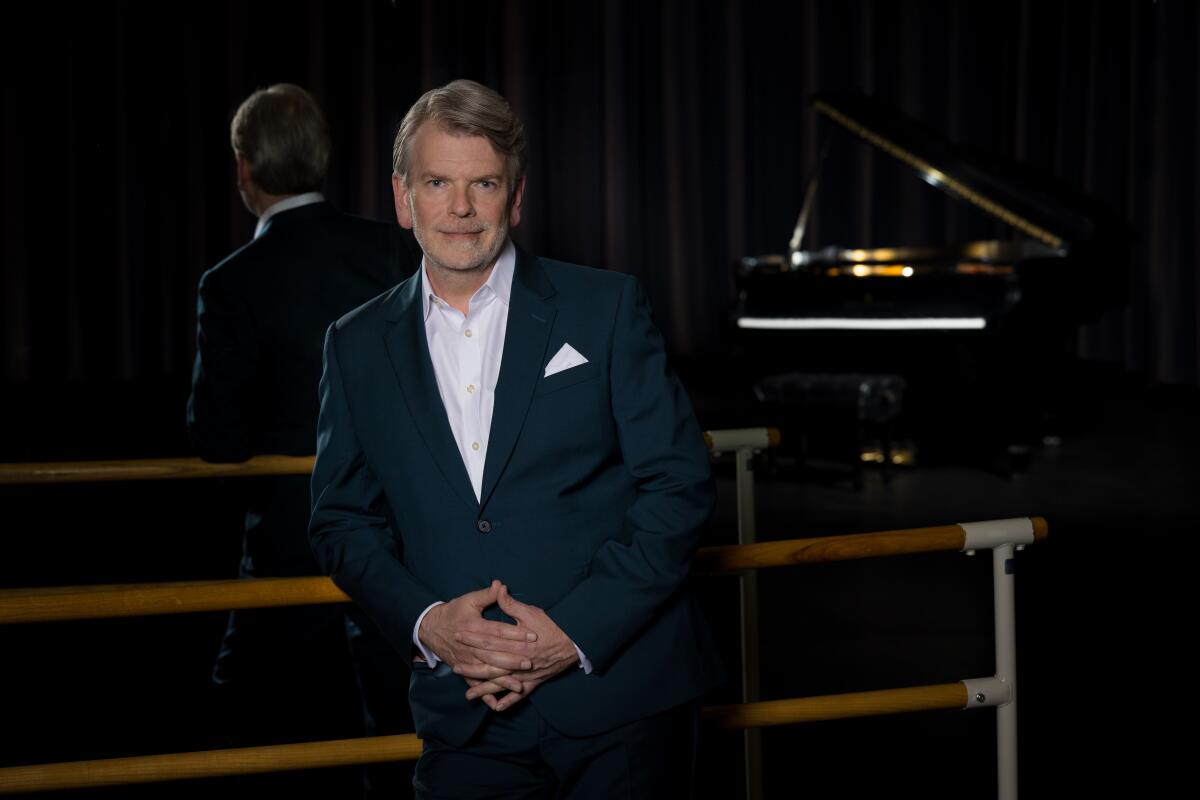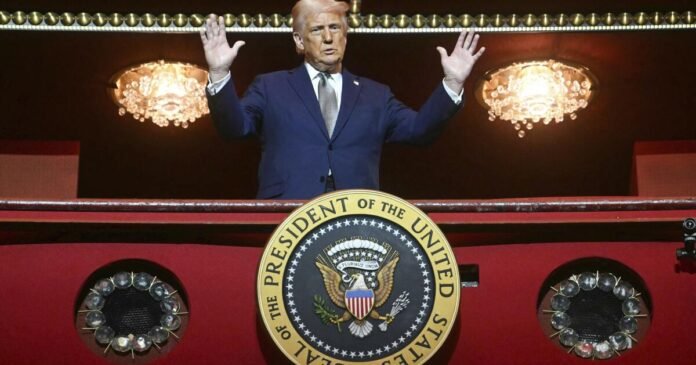It’s July 4, and the country is gearing up to celebrate 249 years of independence from British rule with fireworks, beer and hot dogs. The month of July also marks nearly six months since President Trump took office and embarked on — among many other pursuits — a project to remake arts and culture in America into a set of ideas and ideals more closely resembling his own.
So many steps were taken so quickly toward a MAGA agenda for the arts that it is both helpful and worthwhile to look back on all that has happened since Jan. 20, when after being sworn in Trump issued a raft of executive orders including one titled “Defending Women from Gender Ideology Extremism and Restoring Biological Truth to the Federal Government,” which prompted the National Endowment for the Arts to review its grants in order to ensure that funds were not being used for projects deemed to promote “gender ideology.”
That same day Trump signed another executive order, “Ending Radical And Wasteful Government DEI Programs And Preferencing,” that resulted in the Smithsonian Institution shuttering its diversity offices. After that, the administration was off and running toward the end zone.
Here is timeline of Trump’s biggest, boldest, most controversial moves in American arts and culture:
Jan. 20: Trump dissolves the President’s Committee on the Arts and the Humanities, established by President Ronald Reagan in 1982 to advise on issues of cultural and artistic import. This surprised almost no one (Lady Gaga was its chair, and George Clooney and Shonda Rhimes were members), but it was an early sign of bigger changes to come.
Feb. 7: Trump takes to Truth Social to post the Truth that shook the arts world and broke the internet: “At my direction, we are going to make the Kennedy Center in Washington D.C., GREAT AGAIN. I have decided to immediately terminate multiple individuals from the Board of Trustees, including the Chairman, who do not share our Vision for a Golden Age in Arts and Culture. We will soon announce a new Board, with an amazing Chairman, DONALD J. TRUMP!”
Feb. 12: Trump’s newly appointed Kennedy board members make good on Trump’s Truth Social promise and appoint Trump chairman after firing its longtime president, Deborah F. Rutter. Trump names a former ambassador to Germany, Richard Grenell, as interim executive director and promises to make the Kennedy Center “a very special and exciting place!” TV producer Shonda Rhimes, musician Ben Folds and opera star Renée Fleming all step away from roles working with the center.
Feb. 20: Longtime Trump ally Steve Bannon told a CPAC crowd in Washington, D.C. that the J6 Prison Choir — composed of men jailed after the riot at the Capitol on Jan. 6, 2021 — would perform at the Kennedy Center. A rep for the center said, not so fast.
Feb. 26: The Washington Post reports on a pair of cancellations resulting from Trump’s orders that raise red flags for arts groups across the country. One is the cancellation of a U.S. Marine Band performance featuring high school students of color. The other is an exhibit featuring Black and LGBTQ+ artists at the Art Museum of the Americas.
Week of March 3: The Trump administration moves to fire workers with the General Services Administration, who were tasked with preserving and maintaining more than 26,000 pieces of public art owned by the federal government, including work by Millard Sheets, Ed Ruscha, Ray Boynton, Catherine Opie, M. Evelyn McCormick, James Turrell and Edward Weston. The future care and preservation of these artworks is cast into doubt.
March 14: Trump’s executive order, “Continuing the Reduction of the Federal Bureaucracy,” proposes the elimination of the Institute of Museum and Library Services, which also threatens museum libraries.
March 17: Trump pays his first visit to the Kennedy Center as chairman. He trashes the former management, saying the center has fallen into disrepair. He also expresses his distaste for the musical “Hamilton,” (which canceled its upcoming run of shows at the center after Trump’s takeover) and praises “Les Misérables.”
Late March: A Kennedy Center contract worker strips nude in protest of Trump’s takeover and is promptly fire, and prominent musicians, including Hungarian-born pianist András Schiff and German violinist Christian Tetzlaff, cancel shows in the United States. Tetzlaff told the New York Times that while in America he felt “like a child watching a horror film.”
March 27: Trump issues an executive order, “Restoring Truth and Sanity to American History,” which directs Vice President JD Vance to remove “improper ideology” from the Smithsonian’s 21 museums and the National Zoo in Washington, D.C. and vows to end federal funding for exhibitions and programs based on racial themes that “divide Americans.”
April 2: Under the orders of Elon Musk’s DOGE, the National Endowment for Humanities begins sending letters to museums across the country canceling grants, some of which had already been spent.
April 29: Trump fires U.S. Holocaust Memorial Museum board members picked by former President Joe Biden, including former Second Gentleman Doug Emhoff.
Early May: Arts organizations across the country begin receiving news of grant cancellations issued by the National Endowment for the Arts. The emails read, in part, “The NEA is updating its grantmaking policy priorities to focus funding on projects that reflect the nation’s rich artistic heritage and creativity as prioritized by the President.”
May 30: Trump announces on Truth Social that he’s firing Kim Sajet, the longtime director of the Smithsonian’s National Portrait Gallery — and the first woman to hold the role — for being “a highly partisan person, and a strong supporter of DEI.” Critics quickly respond that the president does not hold that power since the Smithsonian is managed by a Board of Regents and is not under the control of the executive branch. A little more than a week later, the Smithsonian asserts its independence and throws its support behind its secretary Lonnie G. Bunch. A few days later, Sajet steps down from her role of her own accord.
I’m arts and culture writer Jessica Gelt, still reeling from just how much has happened in six short months. Here’s this weekend’s arts and culture roundup.
Best bets: On our radar this week
Newsletter
You’re reading Essential Arts
Our critics and reporters guide you through events and happenings of L.A.
You may occasionally receive promotional content from the Los Angeles Times.

Mary Pickford, one of the many stars featured in the Hollywood Heritage Museum’s exhibition, “From Famous Players-Lasky to Paramount: The Rise of Hollywood’s Leading Ladies.”
(Associated Press)
From Famous Players-Lasky to Paramount: The Rise of Hollywood’s Leading Ladies
The movie industry was built on star power, and women were at the forefront from the earliest days. A new exhibit at the Hollywood Heritage Museum celebrates actors such as Mary Pickford, Gloria Swanson and Pola Negri, who blazed a trail for those who followed, leveraging their fame and gaining creative control over their careers within studio mogul Adolph Zukor’s growing cinematic empire. The show includes costumes, props, personal items and ephemera used by the stars. The museum building, the Lasky-DeMille Barn, was the birthplace of Jesse L. Lasky’s Feature Play Company, which merged with Zukor’s Famous Players Film Company in 1916 before evolving into Paramount Pictures.
Open Saturdays and Sundays. 11 a.m.-3 p.m. Hollywood Heritage Museum, 2100 Highland Ave. hollywoodheritage.org

Michael Frayn’s madcap backstage comedy “Noises Off” plays the Old Globe Theatre in San Diego starting July 6.
(Ben Wiseman)
‘Noises Off’
James Waterston, Michelle Veintimilla and the virtuoso Jefferson Mays star in the Old Globe Theatre’s revival of Michael Frayn’s classic backstage comedy. The play, the forerunner of such slapstick stage works as “The Play That Goes Wrong,” revolves around a British theater’s touring production of a fictional sex romp called “Nothing On,” in which anything that can go badly does. As modern farces go, Times theater critic Charles McNulty wrote that Frayn’s play is “not only one of the funniest but may also be the most elegantly conceived.” Popular among regional theaters, the play was staged earlier this year at the Geffen Playhouse.
Sunday through Aug. 3. Opening night, July 11. Old Globe Theatre, 1363 Old Globe Way, San Diego. theoldglobe.org

Paul Simon, shown here performing in Central Park in New York in 2021, plays the Terrace Theater in Long Beach and Walt Disney Concert Hall in downtown L.A.
(Evan Agostini / Invision)
Paul Simon
Though a recent back injury required surgery and resulted in the cancellation of two shows, America’s troubadour is scheduled to bring his “A Quiet Celebration” tour to the Terrace Theater in Long Beach and downtown L.A.’s Walt Disney Concert Hall next week. Simon has been opening recent shows with a performance of his 2023 album “Seven Psalms,” a 33-minute song suite on aging and mortality, before turning to his diverse six-decades-plus catalog of music. In reviewing the then-76-year-old singer-songwriter’s 2018 Hollywood Bowl show, Times music critic Mikael Wood presciently noted that, despite it being billed as a “farewell show,” this did not seem like someone who was ready to hang up their guitar. “It was Simon’s searching impulse, still so alive in this show, that made it hard to believe he’s really putting a lid on it. Start saving for the comeback tour now.”
8 p.m. Tuesday. Terrace Theater at the Long Beach Convention Center, 300 E. Ocean Blvd., Long Beach;
8 p.m. Wednesday, July 11, 12, 14 and 16. Walt Disney Concert Hall, 111 S. Grand Ave., downtown L.A. tour.paulsimon.com

Patrons enjoy an evening at the Hollywood Bowl.
(LA Phil)
Prokofiev and Pride at the Bowl
The Los Angeles Philharmonic has two shows at the Hollywood Bowl next week that demonstrate the ensemble’s eclectic range. On Tuesday, Thomas Søndergård conducts Prokofiev’s Fifth, preceded by Coleridge-Taylor’s “Ballade in A minor, Op. 33” and “Rhapsody on a Theme of Paganini” by Rachmaninoff. Two days later, the group, conducted by Oliver Zeffman, celebrates Classical Pride with a program curated by Zeffman. It opens with Bernstein’s “Overture to ’Candide’” and closes with Tchaikovsky’s “Francesca da Rimini,” but the heart of the show brings together contemporary LGBTQ+ artists including vocalists Pumeza Matshikiza, Jamie Barton and Anthony Roth Costanzo for the world premiere of Jake Heggie’s song cycle “Good Morning, Beauty,” featuring lyrics by Taylor Mac; a performance of Jennifer Higdon’s “blue cathedral”; and a set of comedy, music and reflection from violinist and drag performance artist Thorgy Thor of “RuPaul’s Drag Race.”
Prokofiev’s Fifth, 8 p.m. Tuesday; Classical Pride, 8 p.m. Thursday. Hollywood Bowl, 2301 N. Highland Ave. hollywoodbowl.com
Culture news

Executive and Artistic Director Thor Steingraber of the Soraya will step down in 2026.
(Luis Luque)
Thor Steingraber, executive and artistic director of the Soraya, announced he is stepping down after 12 years following the end of the 2025-26 season. In a letter to patrons, Steingraber wrote, “I’m not stopping, but rather am pivoting to new opportunities.” He previously directed opera for many years at L.A. Opera, San Francisco Opera, Lincoln Center and venues around the world, and he held leadership roles at the Kimmel Center in Philadelphia and the Los Angeles Music Center. Steingraber went on to thank his Soraya and CSUN colleagues, the many artists he’s worked with and supporters of the Soraya, including Milt and Debbie Valera and to the Nazarian family. No successor has been named.
For the first time since the 1912 Salon d’Automne in Paris, a rare Diego Rivera portrait is on exhibit, and fortunately for us, it’s at the Huntington Art Museum in San Marino. The painting is of Señor Hermenegildo Alsina, a Catalan bookbinder, photographer, publisher and close friend of Rivera. “This is a rare, early Rivera, from his European years, before he returned to Mexico and became synonymous with the muralist movement,” said the Art Museum’s director, Christina Nielsen, in the press release. “It’s elegant, formal, and very unlike the Rivera most people know.”

“Initial H: The Nativity,” a 15th century Italian manuscript leaf recently gifted to the J. Paul Getty Museum.
(Getty Museum, Gift of T. Robert and Katherine States Burke)
The J. Paul Getty Museum announced a gift of rare Italian manuscript illuminations last week. The collection of 38 manuscript leaves were donated by T. Robert Burke and Katherine States Burke. The works were made by the most prominent artists of the 14th and 15th centuries, including Lorenzo Monaco, Don Silvestro dei Gherarducci, Lippo Vanni, Giovanni di Paolo and Sano di Pietro. They depict religious scenes primarily drawn from the lives of Jesus, Mary and the saints and largely originated from Christian choir books. The donation also includes “Initial H: The Nativity,” made around 1400 by the prolific Don Simone Camaldolese. “The exceptional quality of the Burke Collection will radically change the Getty Museum’s ability to tell the story of Italian illumination,” said Elizabeth Morrison, senior curator of manuscripts at the Getty Museum, in a press release. The new pages will be available through the Getty Museum’s collection online once they are digitized.
The SoCal scene

Kamasi Washington, right, performs in the David Geffen Galleries at the Los Angeles County Museum of Art.
(Allen J. Schaben / Los Angeles Times)
The Los Angeles County Museum of Art held its first event Thursday night inside the Peter Zumthor-designed David Geffen Galleries last week. The new building may still be empty, but jazz saxophonist Kamasi Washington and more than 100 musicians filled it with a sonic work of art. Times classical music critic Mark Swed was there and found the experience captivating: “Washington’s ensembles were all carefully amplified and sounded surprisingly liquid, which made walking a delight as the sounds of different ensembles came in and out of focus. … The whole building felt alive.” Times photographer Allen J. Schaben was also there to capture the visuals.

The new David Geffen Galleries building was built in a Brutalist style.
(Christopher Knight / Los Angeles Times)
As far as the building itself, Times art critic Christopher Knight is less than enthusiastic, writing, “Zumthor and LACMA Director Michael Govan pronounce the new Geffen building to be ‘a concrete sculpture,’ which is why it’s being shown empty now. The cringey claim is grandiose, and it makes one wonder why being architecture is not enough. If it’s true, it’s the only monumental sculpture I know that has a couple of restaurants, an auditorium and a store. Apparently, an artistic hierarchy exists, with sculpture ranked above architecture.”
Enjoying this newsletter? Consider subscribing to the Los Angeles Times
Your support helps us deliver the news that matters most. Become a subscriber.
Jake Brasch’s “The Reservoir,” currently at the Geffen Playhouse, is about a queer Jewish theater student back home in Denver while on medical leave from NYU. Josh, the protagonist, is also battling alcoholism, trying to fix himself by attending to his four grandparents. In his review, Times theater critic Charles McNulty wrote that his patience ran thin with the play, “not because I didn’t sympathize with [Josh’s] struggles. My beef was that he sounded like an anxious playwright determined to string an audience along without forced exuberance and sitcom-level repartee. (Compare, say, one of Josh’s rants with those of a character in a Terrence McNally, Richard Greenberg or Jon Robin Baitz comedy, and the drop off in verbal acuity and original wit will become crystal clear.)”
— Kevin Crust
And last but not least
She Thought Lady Gaga Bought Her Art. Then Things Got Strange.






